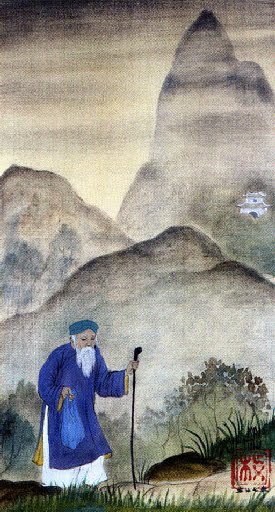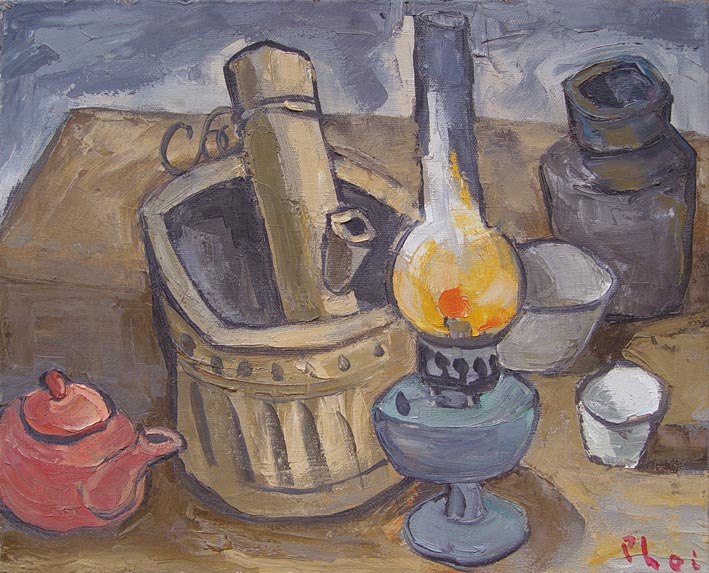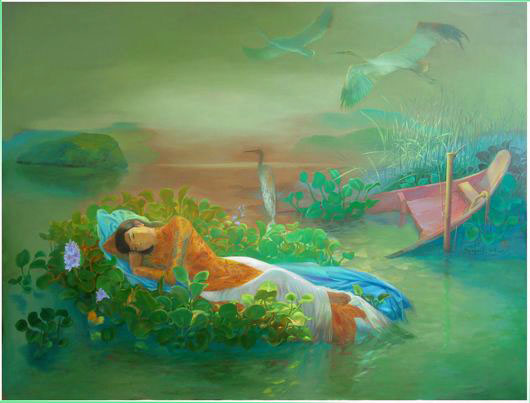|
|
Artists of Vietnam (A-Y) - Buying and Selling Modern Vietnamese Art (Home) - An Phu (Ho Chi Minh City) - Asiana Plaza (Ho Chi Minh City) - Bitexco Financial Tower (Ho Chi Minh City) - Cantavil House Complex - Chennai (India) Real Estate - Diamond Plaza (Ho Chi Minh City) - Galleries (Hanoi) - Galleries (Ho Chi Minh City) -- History of Vietnamese Art - How Does Vietnamese Art Compare With Art From Other Asian Countries? - Houses in Ho Chi Minh City (from Layered) - Importance of Legal Papers in Vietnam - JW Marriot Hanoi - Khem Beach (Phu Quoc) Development Plan - Mui Ne Properties - Nhon Trach New City (Ho Chi Minh City) - Online Realtors - Phong Thuy (Feng Shui) - Phu My Hung New City (Ho Chi Minh City) - Roi Island Project (Phu Quoc) - Royal City Project (Hanoi) - Sofitel Vinpearl Resort and Spa - Thu Thiem Peninsula Development - Why Are Vietnamese Landlords So Obnoxious? - Why Buy Property in Vietnam? - Why is Vietnam so Expensive? - Zen Plaza | |
|
VIETNAMESE MODERN ART » Welcome to Ho Chi Minh City (Otherwise Known as Sài Gòn) » Things to See in Ho Chi Minh City (A-Z): Ben Thanh Market » Things to Buy: Vietnamese Modern Art » Things to Eat in Ho Chi Minh City: Restaurant Guide » Places to Party in Ho Chi Minh City: Bars and Clubs » Places to Stay in Ho Chi Minh City: Saigon Hotels » Getting There: Ho Chi Minh City's Tan Son Nhat International Airport » Further Afield: Mui Ne » Even Further Afield: Phu Quoc Island » Buying Real Estate in Vietnam? » Learning Basic Travel Vietnamese » Dating Vietnamese Girls 
|
While traditional Vietnamese art owes much to influence from China, modern Vietnamese art is indebted to the French, former colonial overlords who gave the country Catholicism and bread (to compete with Confucianism and rice, the great Chinese legacy!) It was the French who in 1925 opened the Ecole des
Beaux-Arts de l'Indochine in Hanoi, one of the foremost incubators of the modern Vietnamese style. Amongst the first ever class at the Ecole was a certain Trung Thu Mai (1906-1980), one of whose paintings is shown below. The painting seems classic oldschool east Asian with its mysterious peaks, wandering scholar with his bitching walking stick, and whatever it is he is carrying in that blue sack of his (it seems to be important.) The artist's name is stamped, in Chinese characters, in red ink in the bottom right corner of the work. The painting overall is quite traditional, and it is hard to see the French in it.
 Traditionally, Vietnamese painted on lacquer or silk, and subjects included junks, pagodas, and historical and mythical rulers and events. During the twenty years of its existence, French instructors at the Ecole trained 128 artists to apply western techniques to traditional Vietnamese painting, and to expand the range of subjects. Artists such as Bui Xuan Phai, Le Pho, and Mai Trung painted in a style that was highly influenced by Impressionism, Realism and Cubism. This following still-life by Bui Xuan Phai, for example, wouldn't seem out of place in a Parisian cafe in the postwar period, and is lightyears removed from the sage in the mountains depicted by Trung Thu Mai.
 Nonetheless, the Vietnamese background remains despite the stylistic break: just as Picasso drew upon the legacy of Greece and Rome for his symbolism, so did Bui Xuan Phai draw upon the historical and mythical legacy of Vietnam. After freedom from French rule at the end of the Second World War, the school changed its name to the Hanoi College of Fine Arts. Figures like Bui Xuan Phai have gone on to become heroes in Vietnam, and on an ongoing cultural inspiration. Artists in Vietnam have an almost rock star appeal these days. This being Vietnam, however, there is as much immitation as there is innovation (the country is home to the best forgers in the world!) As I read somewhere on the Internet a few years ago, authenticity is a major concern since copies and fakes have become prevalent, not only of old masters, but also of some of the best-selling modern artists. There are still good pieces to be found in Vietnam, but they have become harder to find, and it is ever more important to choose carefully the best quality works. This is, hopefully, what this website will be all about! A special mention should be made of lacquer paintings, such as by Trinh Tuan, Dinh Quan, and Cong Kim Hoa. They are uniquely Vietnamese and truly innovative. The synthesis of traditional lacquer techniques and modern paintings has been very successful, and the art of lacquer painting is surely an important contribution from Vietnam to the global contemporary art scene.
(For a comprehensive introduction to Vietnamese culture and art, see Viet Touch.) At the height of the Vietnam War, the Vietnamese Young Artist Association (Hoi Hoa Si Tre Viet Nam) movement arose in the South to inject an abstract element into the art scene. Members included Nguyen Trung and Nguyen Phuoc, one of whose paintings is shown below. Looking at this tranquil and dreamlike scene, it is hard to imagine it was painted in the midst of civil war. Soviet realism it definitely is not!
 Unsurprisingly, many of the movement's artists fled to the United States following the Communist takeover in 1975, Nguyen Phuoc among them. It is hard to imagine that their avande-garde mindset would have been appreciated by the sombre new regime. However, some of the Association's artists did remain in Vietnam, including Nguyen Trung. They survived the hard years of the late 1970s and early 1980s, and now hand their innovative styles on to a new generation of artists. Nguyen Trung, in particular, is one of the most famous Vietnamese artists in the international community, and his works often turn up at auction overseas. Perhaps unusually for a Vietnamese, he appears fascinated by Cambodian culture. Nguyen Trung reportedly lived in Cambodia for a spell at the end of the 1980s, and has painted subjects such as Angkor Wat.

The late 1980s brought about historic shifts and revolutions in the Communist bloc of nations. In Vietnam the upheavals led to the policy of Doi Moi, or the implementation of a "socialist-oriented market economy". The Communist Party retained power, but allowed greater personal freedoms. Consequnetly, many artists from Vietnam were granted permission to travel abroad to exhibit their works.
| |
|
| ||